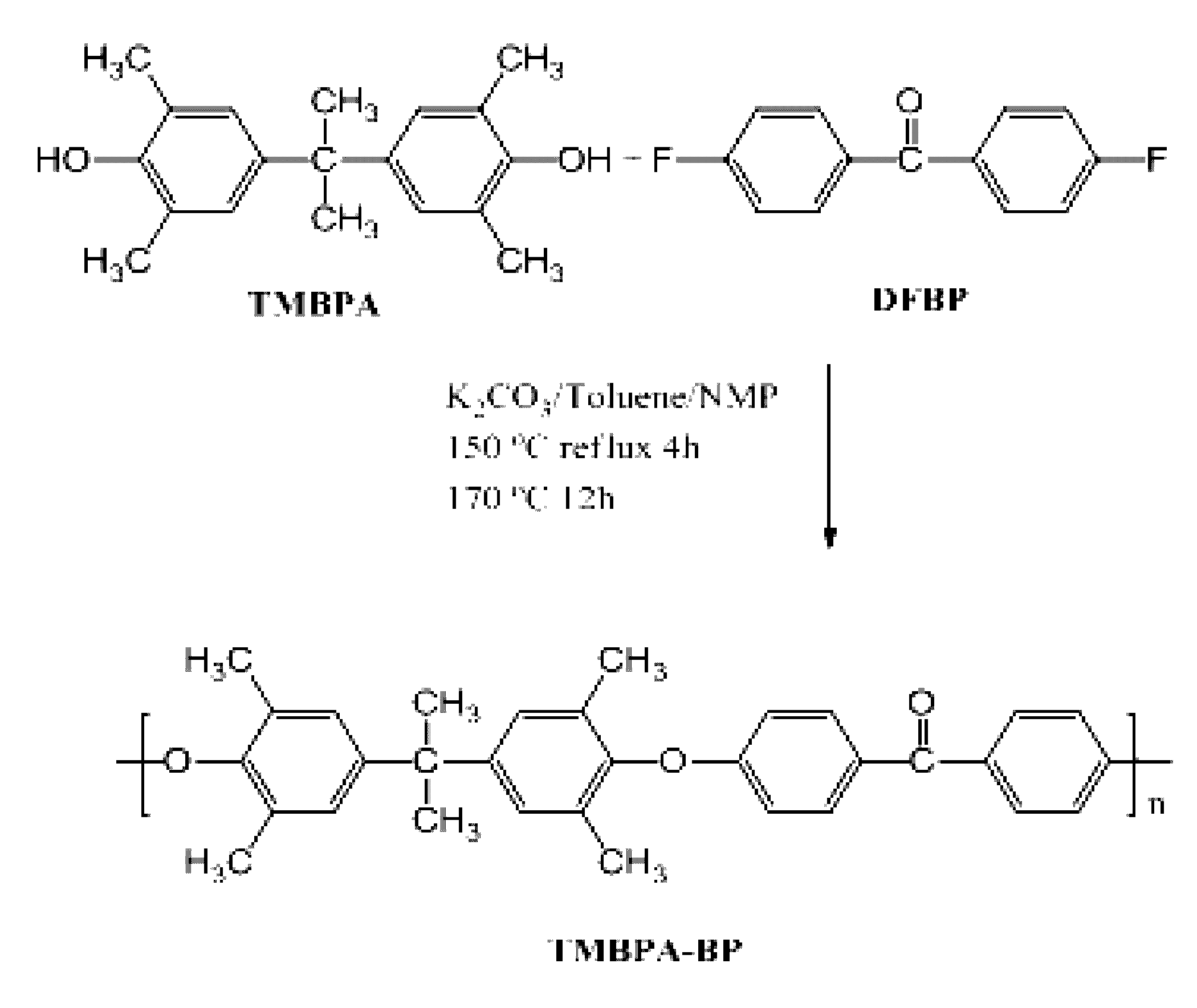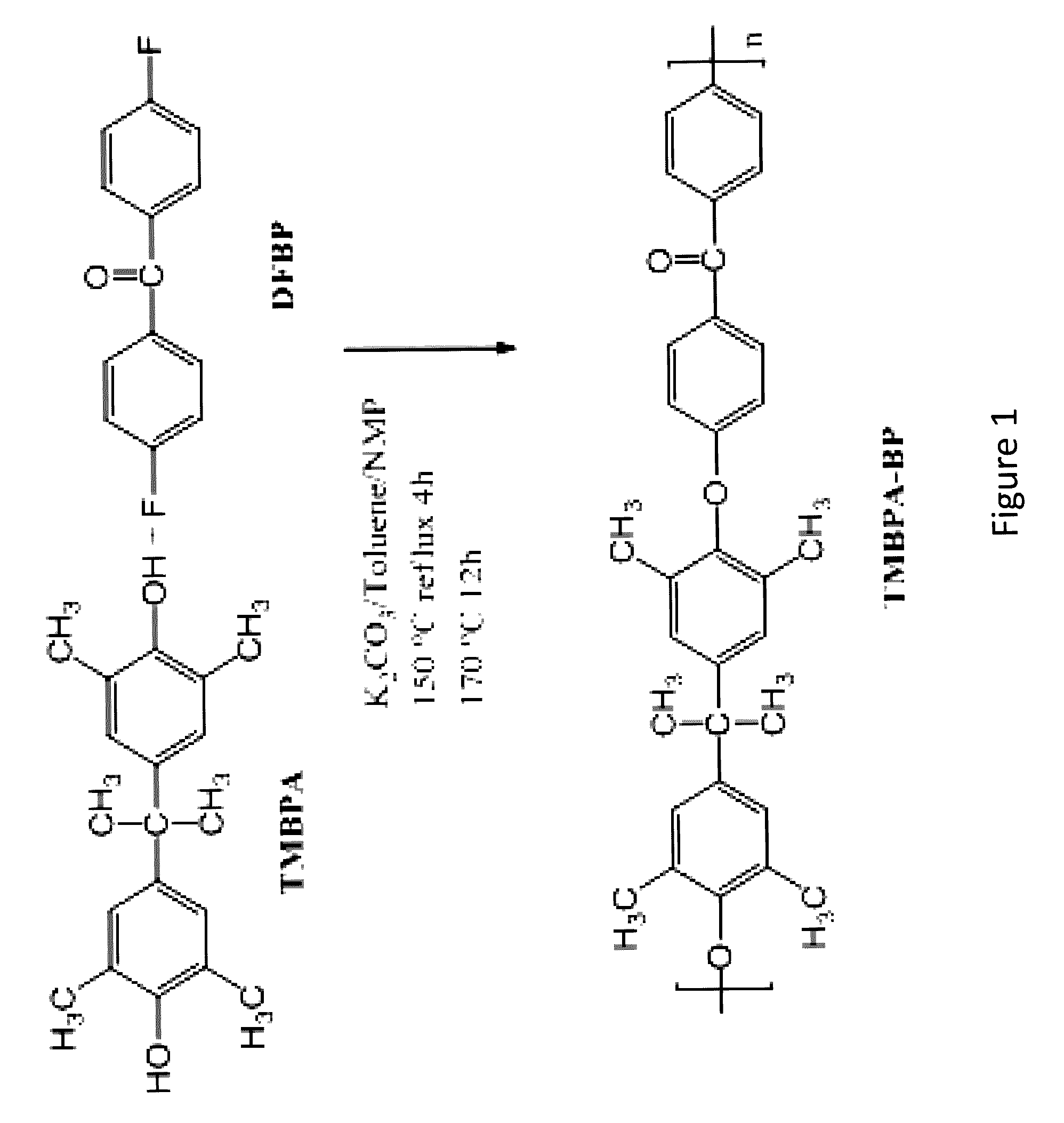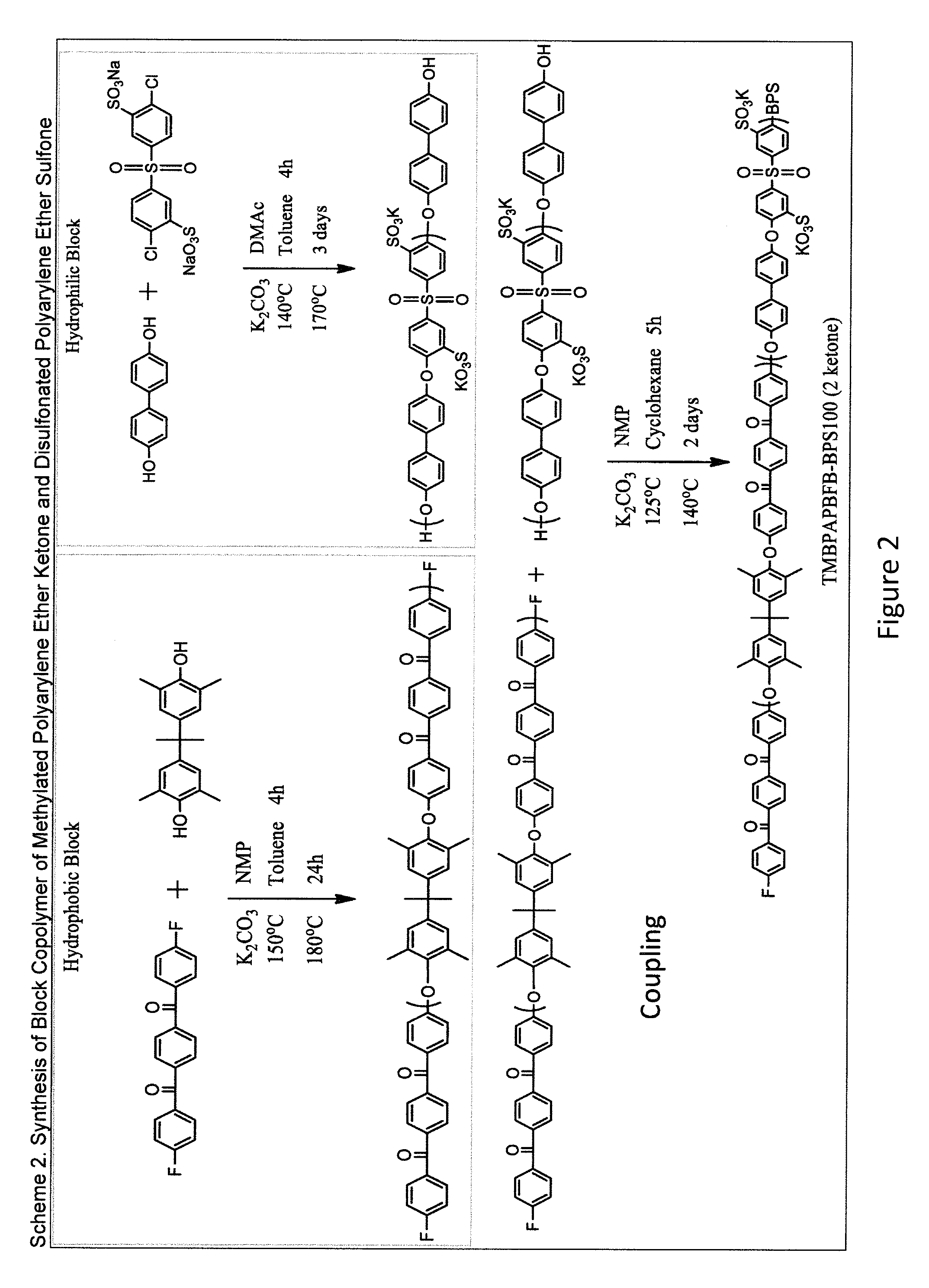Crosslinked polymer compositions, gas separation membranes of such crosslinked polymer compositions, methods of making such membranes, and methods of separating gases using such membranes
a technology of crosslinked polymer compositions and separation membranes, which is applied in the direction of membranes, separation processes, dispersed particle separation, etc., can solve the problems of loss of performance, limited selectivity, and long-term stability of current available gas separation membranes
- Summary
- Abstract
- Description
- Claims
- Application Information
AI Technical Summary
Problems solved by technology
Method used
Image
Examples
experimental examples
[0300]The invention is further described in detail by reference to the following experimental examples. These examples are provided for purposes of illustration only, and are not intended to be limiting unless otherwise specified. Thus, the invention should in no way be construed as being limited to the following examples, but rather, should be construed to encompass any and all variations which become evident as a result of the teaching provided herein.
[0301]Without further description, it is believed that one of ordinary skill in the art can, using the preceding description and the following illustrative examples, make and utilize the compositions of the present invention and practice the claimed methods. The following working examples therefore, specifically point out the preferred embodiments of the present invention, and are not to be construed as limiting in any way the remainder of the disclosure.
example 1
Synthesis of TMBPA-BP
[0302]Synthesis of a polymer of Compound 1 was prepared from tetramethyl bisphenol A (TMBPA) and difluorobenzophenone (DFBP) as follows: TMBPA (8.100 g, 28.48 mmol), DFBP (6.215 g, 28.48 mmol), and NMP (95 mL) were placed into a 250 mL three neck round bottom flask equipped with an overhead stirrer, a condenser, a nitrogen inlet, and a Dean-Stark trap. The mixture was heated to 155° C. and stirred until the monomers were completely dissolved. Once a clear solution was obtained, K2CO3 (4.590 g, 32.75 mmol) and toluene (48 mL) were added into the flask. The reaction was allowed to reflux at 155° C. for 4 h to azeotropically remove water from the system. The toluene and water were removed from the Dean Stark trap and the reaction mixture heated to 170° C. for 24 h. The reaction was cooled to room temperature in the reaction flask and then diluted with NMP (95 mL). The solution was stored in the reaction flask for at least 12 h to allow precipitated salt and unreact...
example 2
Synthesis of TMBPA-MBFB
[0304]The procedure described in Example 1 was repeated in substantially the same manner, except that DFBP was replaced with meta-bis(4-fluorobenzoyl)benzene (mBFB) to make a polymer of Compound 2.
[0305]
PUM
| Property | Measurement | Unit |
|---|---|---|
| water sorption | aaaaa | aaaaa |
| water sorption | aaaaa | aaaaa |
| temperature | aaaaa | aaaaa |
Abstract
Description
Claims
Application Information
 Login to View More
Login to View More - R&D
- Intellectual Property
- Life Sciences
- Materials
- Tech Scout
- Unparalleled Data Quality
- Higher Quality Content
- 60% Fewer Hallucinations
Browse by: Latest US Patents, China's latest patents, Technical Efficacy Thesaurus, Application Domain, Technology Topic, Popular Technical Reports.
© 2025 PatSnap. All rights reserved.Legal|Privacy policy|Modern Slavery Act Transparency Statement|Sitemap|About US| Contact US: help@patsnap.com



